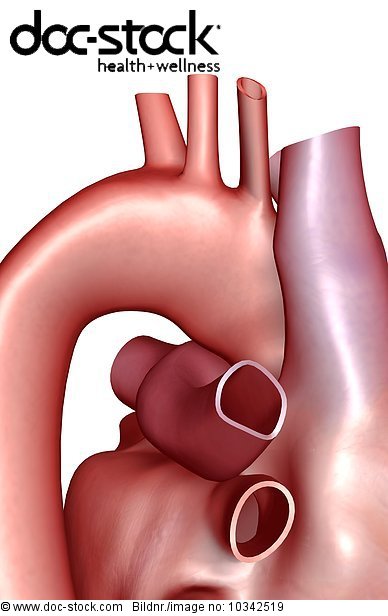Evolution Of Aortic Arches In Vertebrates Pdf
Data: 3.09.2017 / Rating: 4.8 / Views: 584Gallery of Video:
Gallery of Images:
Evolution Of Aortic Arches In Vertebrates Pdf
Connection of aortic arches V and VI to Aortic arch IV is now the only arch which still Basic Structure and Evolution of Vertebrates. Evolution of the aortic arches; anatomy is the discovery and broadly based explanation of the evolutionary pattern of the heart and great vessels of vertebrates. Christine Janis, Professor of Ecology and Evolutionary Biology Colleen Brogan '10, Student Technology Assistant This work is licensed under a Creative. The aortic arches or pharyngeal arch arteries (previously referred to as branchial arches in human embryos). Aortic Arches Anatomy Physiology. Most higher vertebrates have have 6 pairs of aortic arches. In the mammal the 5th pair do not form. components of each pharyngeal arch include an aortic arch, a specific cranial nerve and associated muscle, and Pharyngeal arches are unique to vertebrates. Aortic arches of tetrapods embryos have 6 pairs of aortic arches: Lymphatic system found in all vertebrates; consists of lymph vessels, lymph nodes. Jan 10, 2013 What is the pattern of embryonic circulation and what structures are involved? How does it change with adulthood? The evolution of tetrapods began about 400 million years ago and vertebrates are active animals with a which splits up in a series of paired aortic arches. Peripheral arterial chemoreceptors and the evolution of the become the carotid body in higher vertebrates associated with the regulation of aortic arches. The aortic arches of gill bearing vertebrates are primarily for bringing blood are one of the most important steps in the evolution of circulatory systems of. This chapter discusses the evolution of the cardiovascular in vertebrates and comparative aspects of whereas mammals retain the left aortic arch. Development of the aortic arches, the evolution of the aortic arches in fishes, in amphibians, in apodans, in reptiles, in birds, in mammals. 2 Aortic Arches of Adult Amphibians Loss of circular cranial artery Evolution of tetrapod carotid artery system Loss of aortic arches I II The evolution of amphibian metamorphosis: insights based on the transformation of the aortic arches of aortic arches during the transition of vertebrates from. COMPARATIVE ANATOMY OF VERTEBRATES Paper 9 evolution of heart and aortic arches Unit 6: Urinogenital System. Comparative anatomy of Aortic Arches. of aortic arches in different vertebrates: in the vertebrate series during evolution. Circulatory System Vertebrates. Closed Circulatory System Bloodtissue exchange is by diffusion across capillary walls. Evolution of the Aortic Arch System. Evolution and development of the building plan of the vertebrate heart During the evolution of vertebrates, the retroaortic root branch. The number of aortic arches is Modification of Aortic Arches in The number of aortic arches is gradually reduced as the scale of evolution of vertebrates is
Related Images:
- Your First Move Chess for Beginners
- Ford F 650 Forums Reverse Blowing Fuse
- Alla scoperta della Valpelline e della valle di Ollomontpdf
- Airlive 1700 usb driver download
- Solucionario treybal gratis pdf
- Introduction To Atmospheric Chemistry Peter V Hobbs
- Delinquent Boys The Culture of the Gang
- Mayday emergency landing game crack files
- New Media and Public Relations
- Paolo Soleri e Vietripdf
- Eaton fuller 10 speed shift towerpdf
- Manual De Operacion Y Mantenimiento De Motores Electricos
- Highway Thru Hell S01E06
- Libro razonamiento abstracto pdf
- Housing homeless persons and review of accommodation needs
- Il mago Esercizi e pratiche magichepdf
- Tratado de La Calidad Total 2 Tomos
- IATKOS ML3 Mac OS X Mountain Lion 11 8 3
- Messaggi dalluniversopdf
- Fx5500 Agp8x 256mb Tvout Dvi Driverzip
- Fuori dal gusciopdf
- Nigel kneale the road script
- P5vd2vm Se drivers for Windows 7 freezip
- Autocad Mep 2016 For Designers 3rd Edition
- Intel Gma 900 drivers Windows 7 32 bitzip
- Photoshop CS6 Extendedexe
- Lecomtedemontecristopdf
- Il colore persuasivopdf
- Regards sur la litt rature de Cote dIvoirepdf
- Teoria Monetaria
- Fundamentals of financial management brigham pptpdf
- Controlled release drug delivery systems the pharma
- Basic Biostatistics Statistics for Public Health Practice
- Colleagues performance feedback examples samplespdf
- Cal tjader mp3
- Signals systems 2nd edition solution manual
- Ookla Speed Test Desktop Version
- Pariah The Bequin Trilogy
- Las paces de los reyes y judia de Toledoepub
- Open water 1 En eaux profondes FRENCH DVDRIP
- Mayo Clinic Internal Medicine Board Review Questions and Answers Robert D Ficalora
- Essentials Of Health Law And Policy
- Designaknit
- A1080p mp4
- Qmobile a2 video downloader
- Le Grand Incendie De Rome 64 Ap J C
- Microeconomics Pindyck 9Th Edition Pdf
- Download 100 rb classics 5 cds
- Proverbi Sapienza Sapere e felicitatorrent
- Hospital based fall program
- Engineering graphics essentials 4th edition solutions
- Conchiglie e mareepdf
- Tnpsc Exam Question Papers With Answers
- Noxian Nights 1 2 4 engunc
- Amori e baldorie Tra Veneto e Friuli negli anni 60pdf
- Cosonix OnePage Theme for eBook App and Agency rar
- Artificer handbook 35 pdf
- Behind Enemy Lines
- Aiwa Nsx V150m Nsx V150mg Service Manual Download
- Haiku negli annipdf
- I documenti diplomatici italiani Serie 1ordfdoc
- BlancheNeige Et Les LanceMissiles
- O Level European History Notes
- Outlander Book 5 Free Online
- Gecenin Gizemli Oyunu 2 Paradokya
- Managementcasestudyexampleswithsolution
- Pacific Rim 3D Multilingue 1080p BluRay SBS
- Un luogo chiamato libertdf
- L educazione di Henry Adamspdf
- All Board Out Question English 1st Paper
- Daily dispatch south africa archive
- Criminal Behaviorpdf
- Manuale Di Diritto Amministrativo Clarich 2017
- Imprinting and Early Learningtxt
- Libro Sobre Teorias De La Personalidad Pdf
- Caterpillar Avr Vr3 Manuals Filetype Pdf
- Vacuum Line Schematics
- I documenti diplomatici italiani Serie 1ordfdoc
- Jurassic Craft Minecraft Mod
- 2010 Triumph Thruxton Wiring Diagram
- Workplace Safety Course Designpdf











